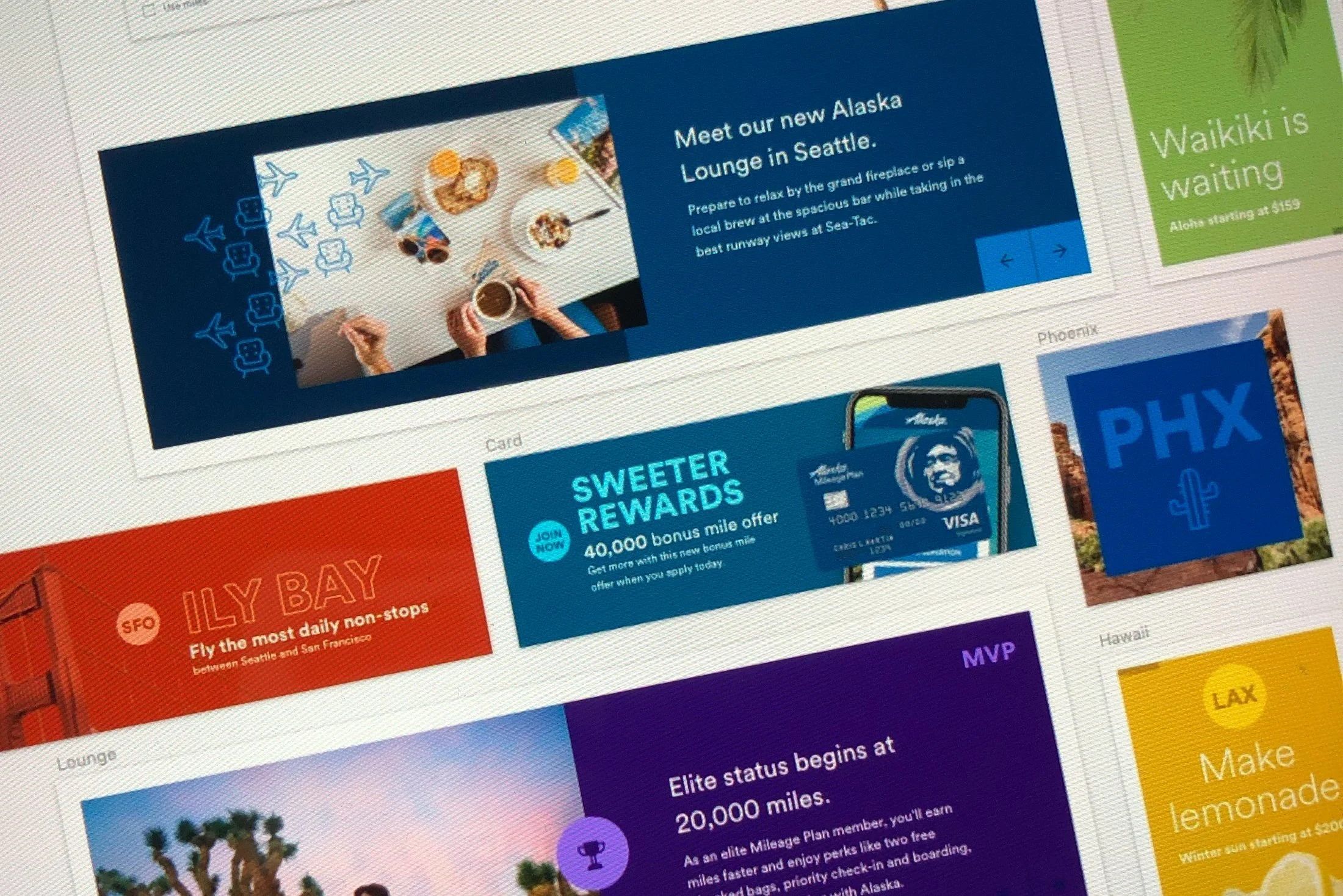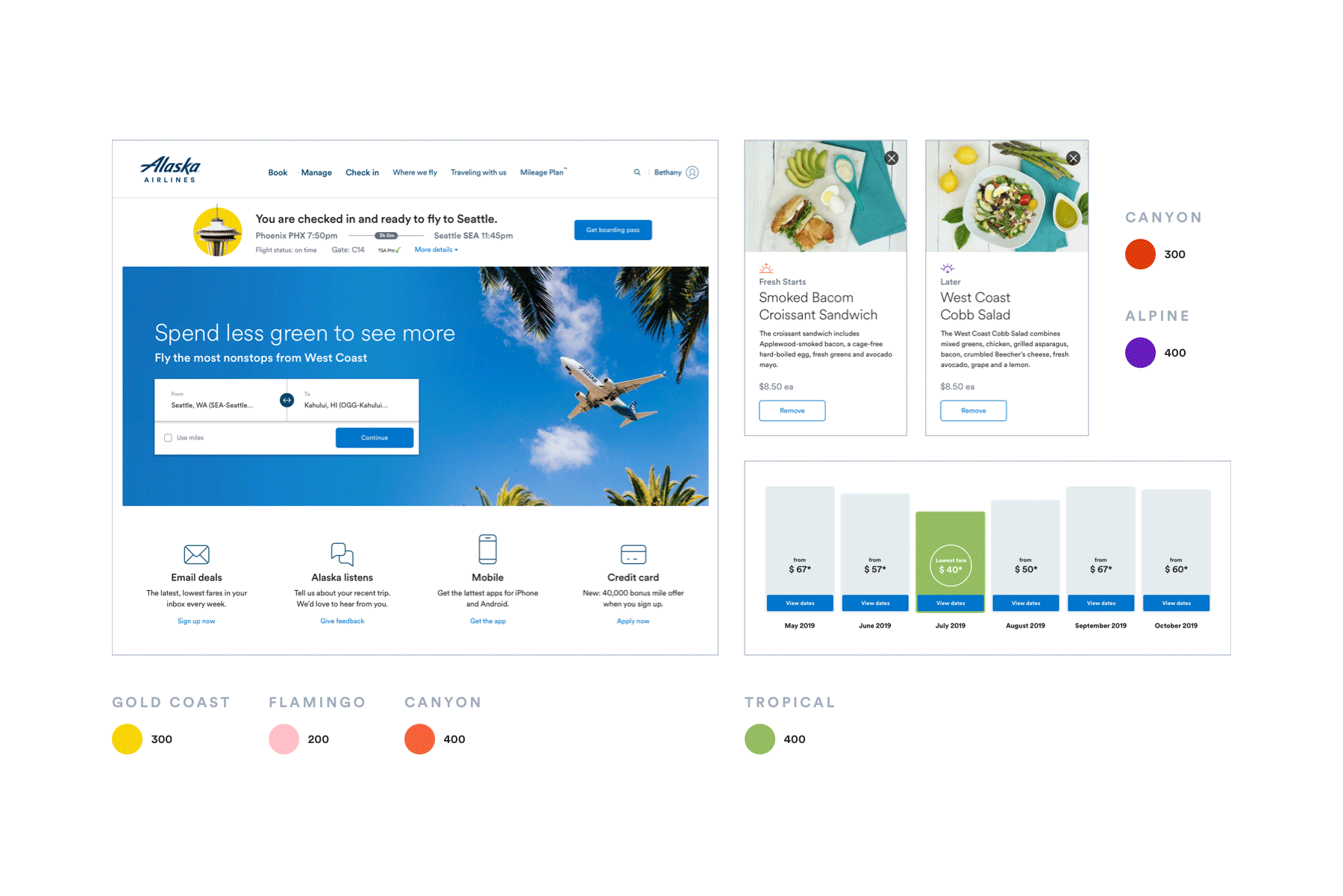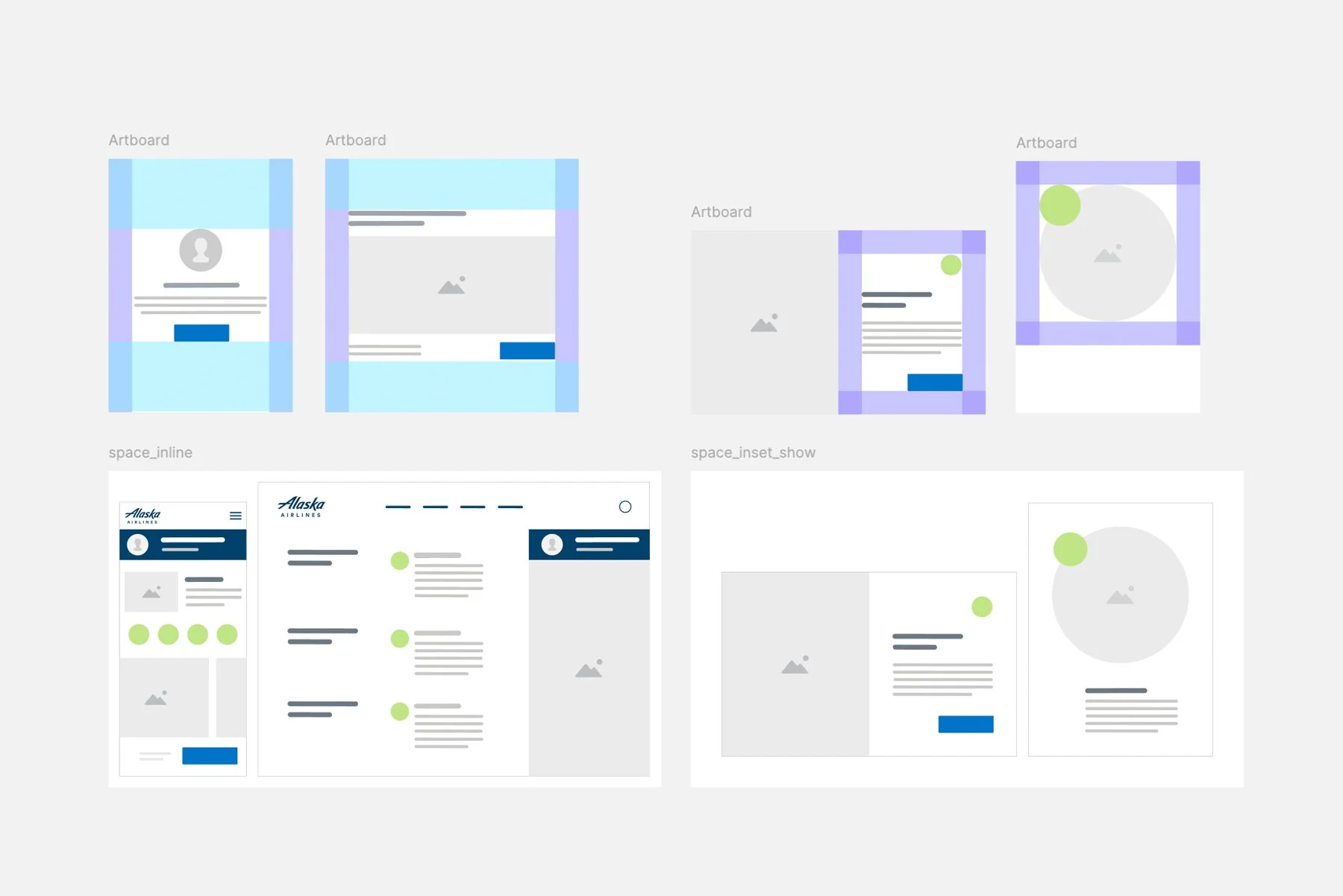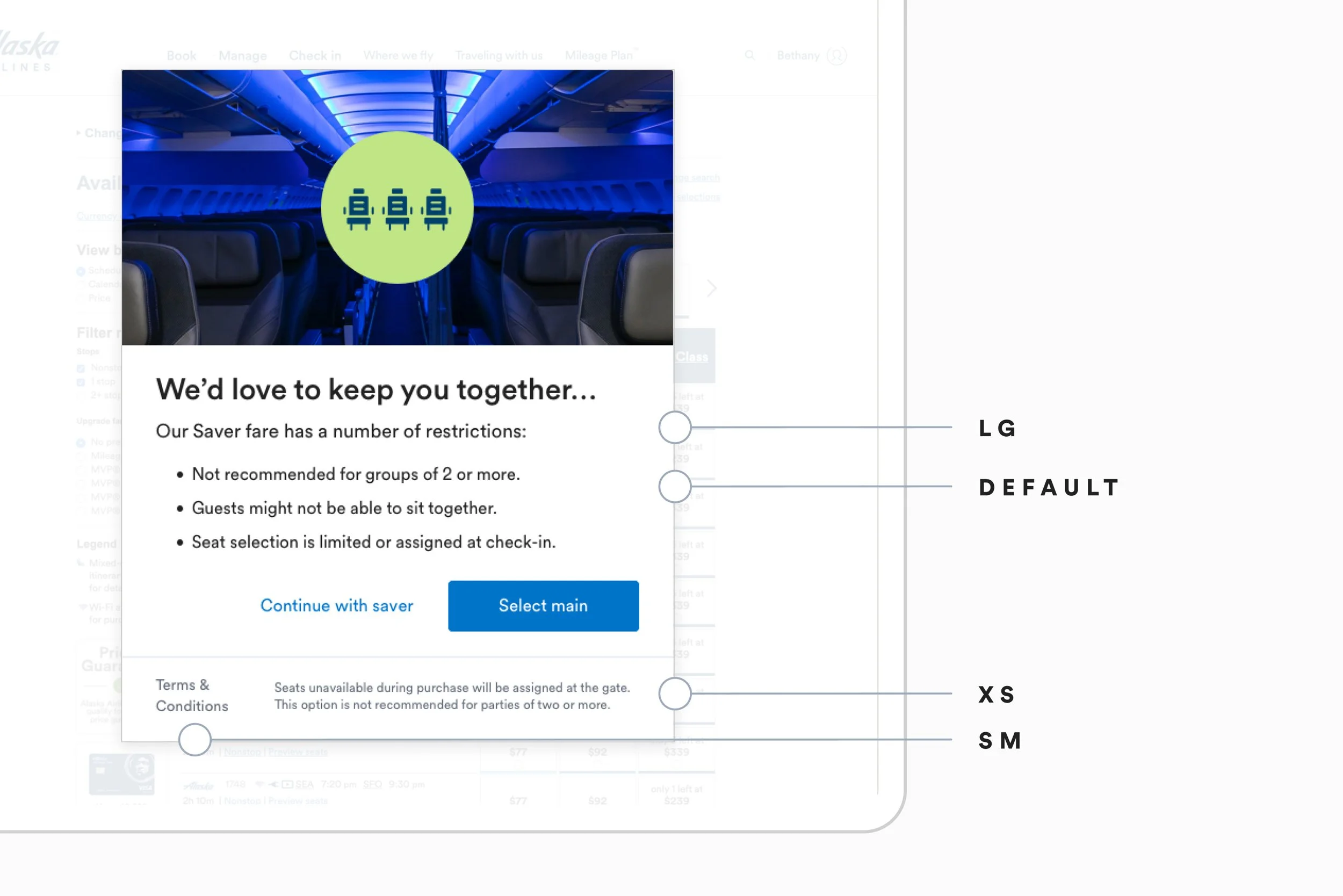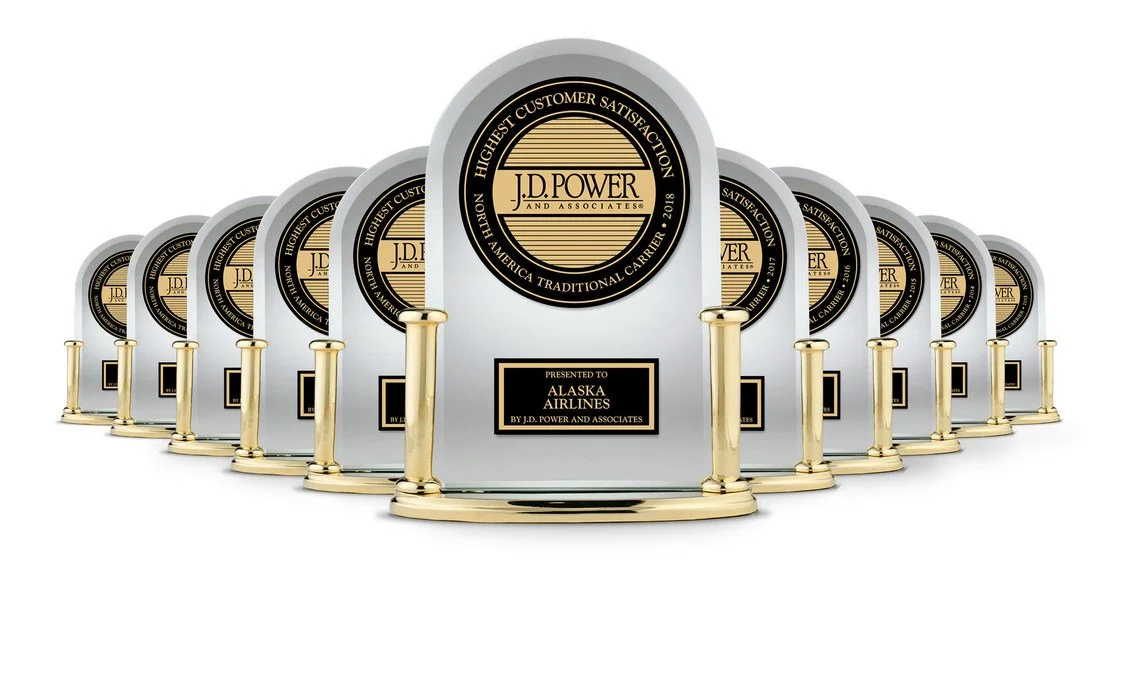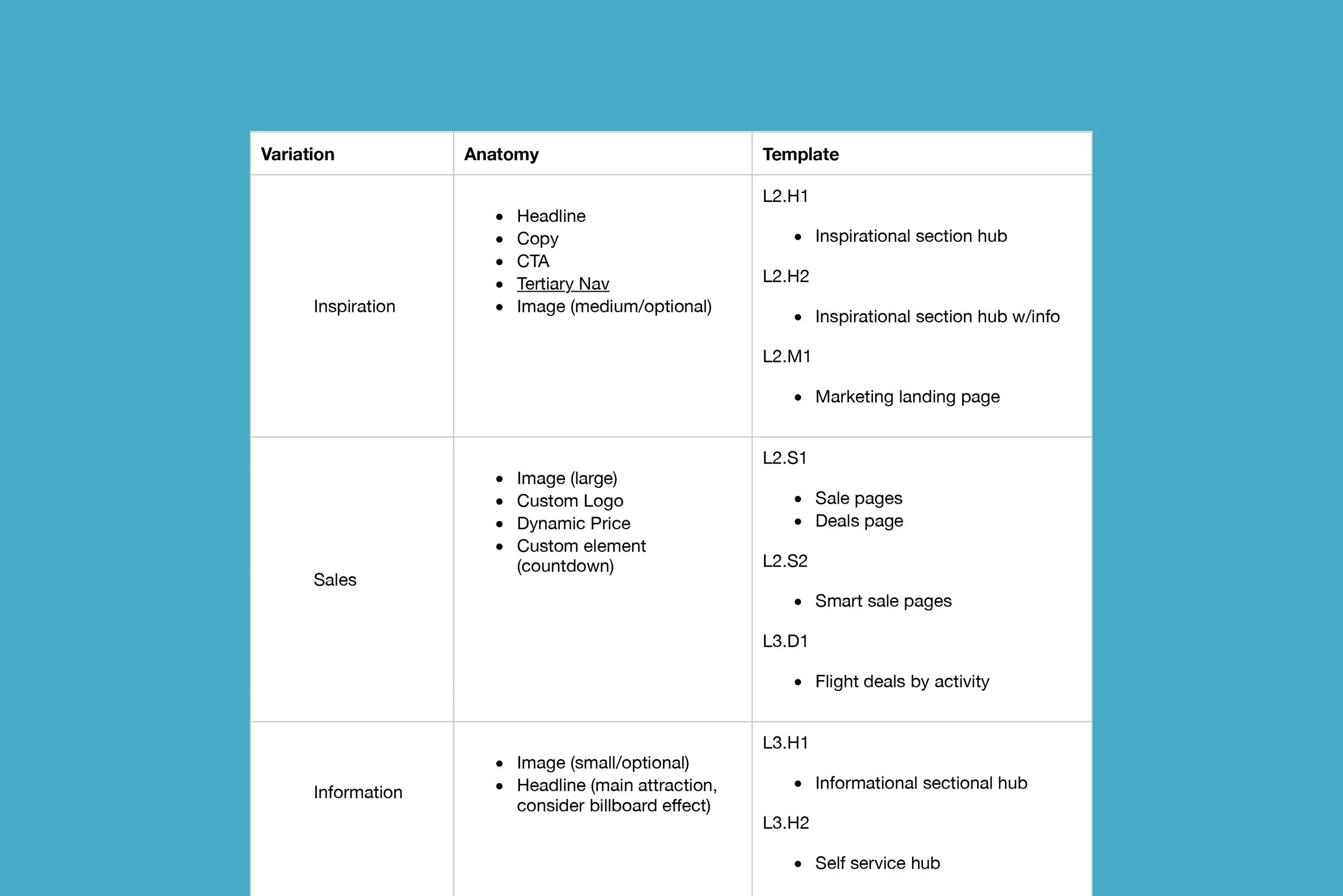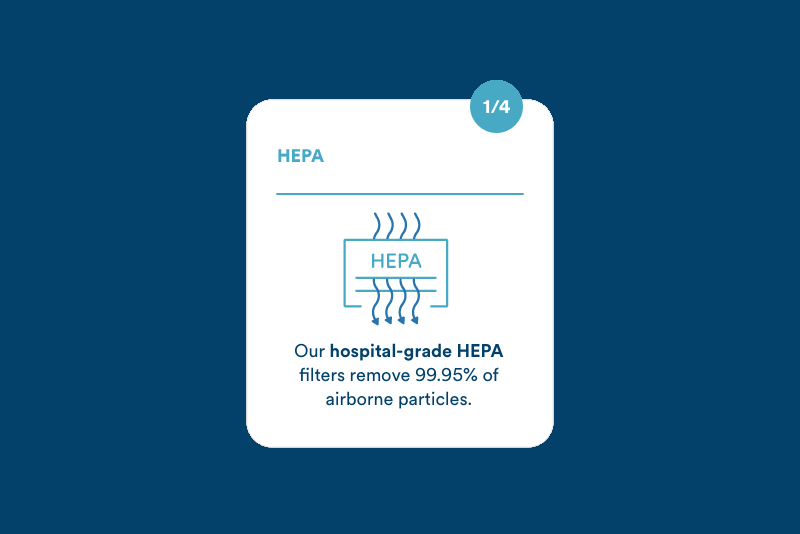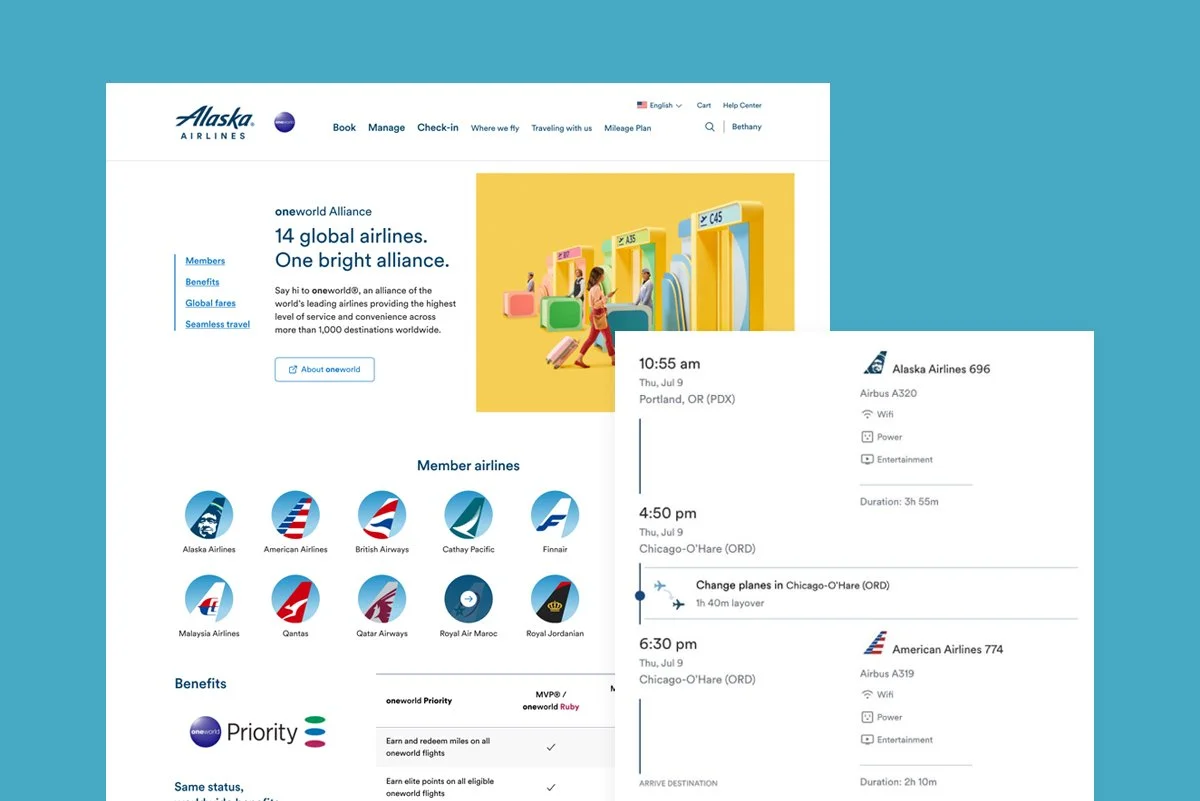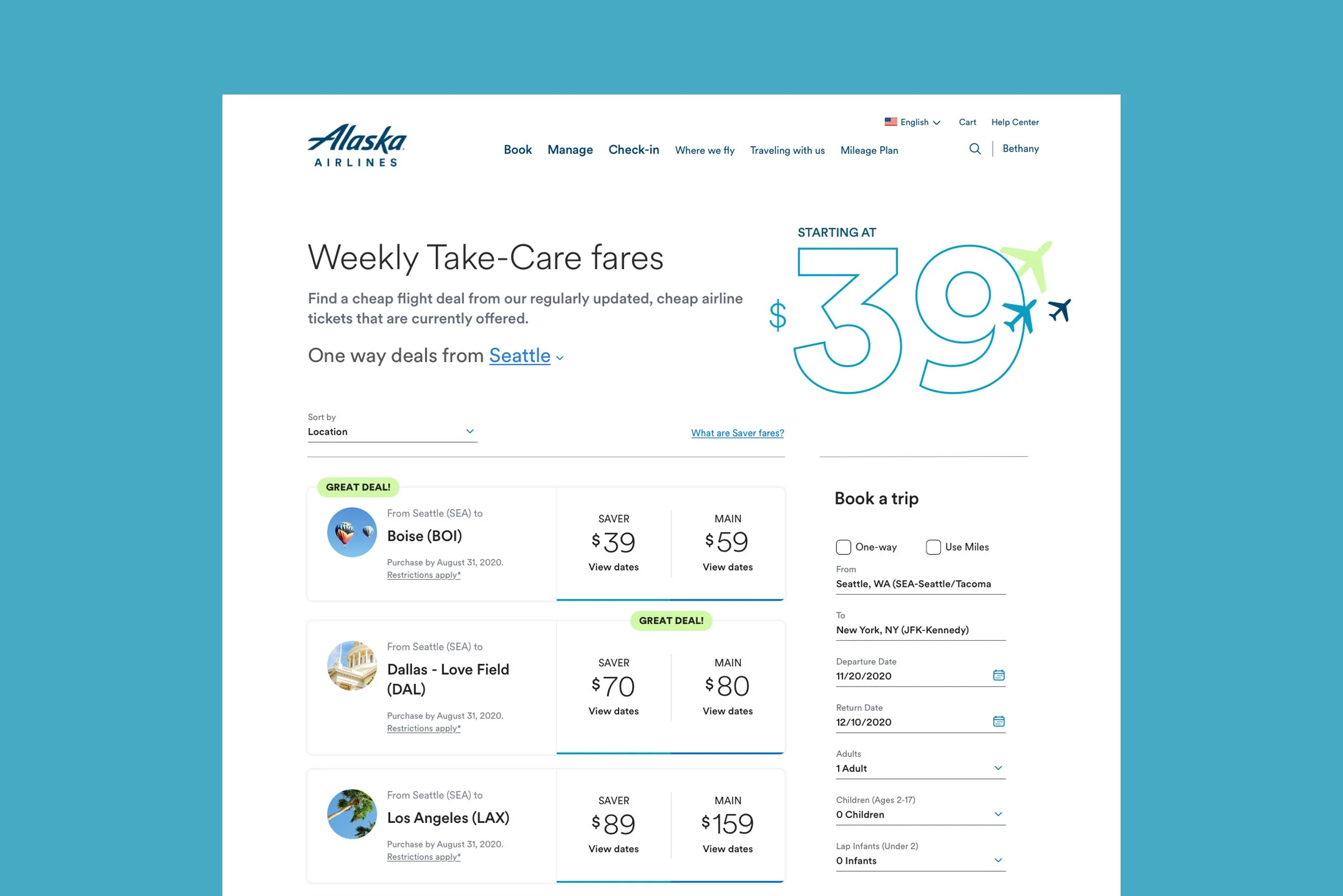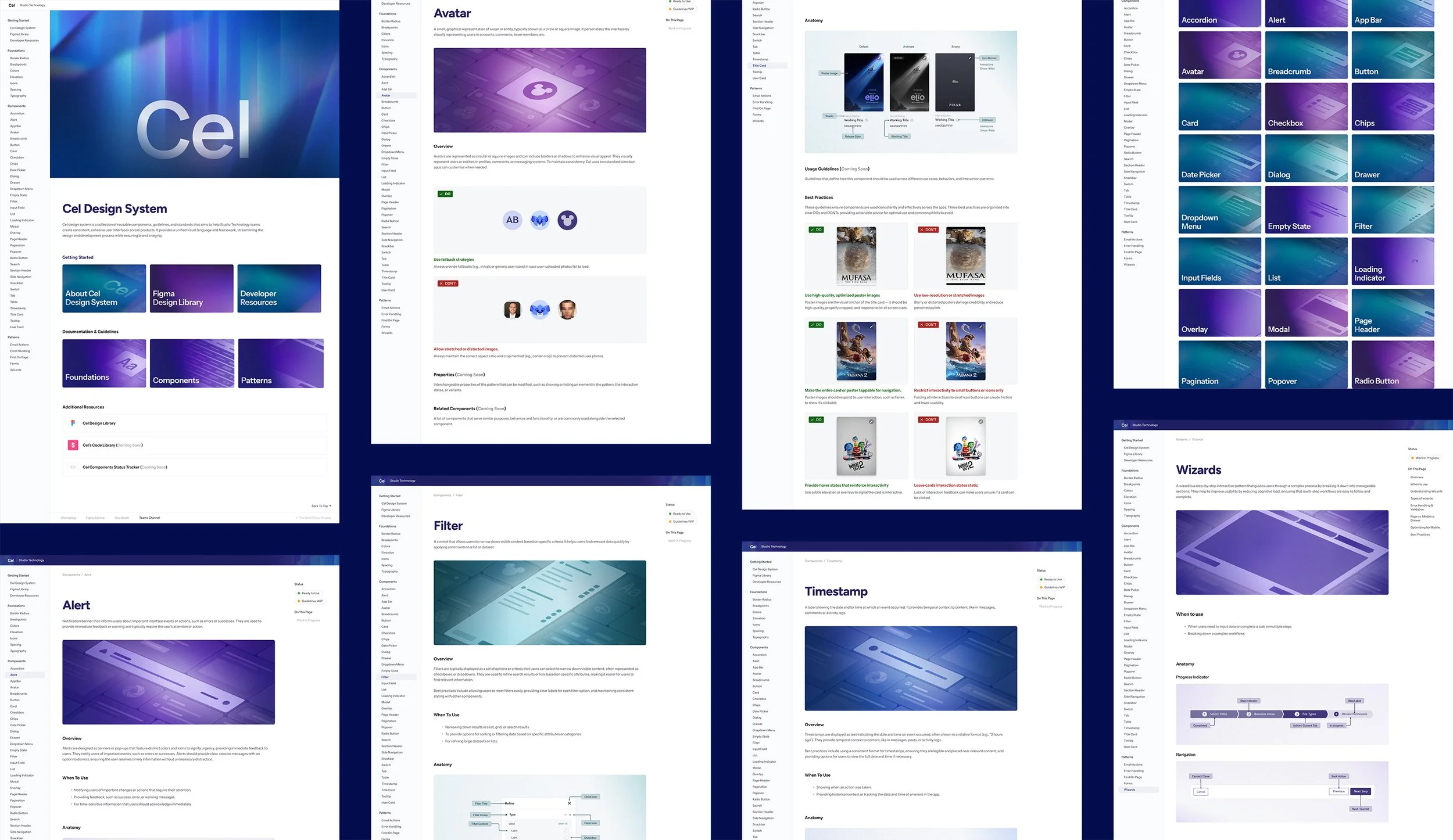
Patterns to Platforms
Using design foundations to create cohesive, creative driven experiences
At Alaska Airlines, I led the creation of the Auro Design System, shaped by the company’s renewed brand identity and built to perform across digital platforms. That foundation became critical as the airline navigated COVID, rapid growth, and key integrations. It gave teams a shared language to move fast while staying grounded in the brand.
I’ve worked hands-on and led teams across both systems and content design. I’ve written UI copy, shaped naming conventions, and partnered with brand to craft headlines and campaigns that feel timely, human, and culturally relevant. I’ve restructured transactional flows to bring empathy and clarity to moments where timing and tone matter most.
At Disney, I lead teams responsible for building tools and systems used by on-set crews, legal and marketing teams, and studio executives. We also support experiences for fans and audiences, where cohesion and functionality have to hold up at scale. Balancing those needs means building systems that are not only efficient, but speak with a clear and trusted voice.
01 Alaska Airlines Design System
The Opportunity
Alaska Airlines was gaining national momentum following its acquisition of Virgin America and a refreshed brand identity. While the marketing team had carved out a strong, modern presence, the digital experience was inconsistent, fragmented, and disconnected from the evolving brand. Design efforts were siloed, and the absence of a cohesive system made scaling difficult. With expansion on the horizon and major product updates underway, the company needed a centralized source of truth to align all digital touchpoints.

The extended digital color palette was a critical first step in bringing cohesion to our ecosystem. Inspired by high-impact brand moments like billboards, social posts, TV spots, and flight attendant uniforms, it infused personality and consistency into our website, apps, kiosks, and airport screens. This foundational move built trust with brand and marketing, secured executive buy-in, and set the stage for a scalable design system that carried our tone and identity across every screen.
Process / Governance Model
Process / Component Audit
Components / Input Fields
Foundations / Type Ramp
Component Overview
Foundations / Accent Colors + New Flows
Foundations / Spacing
Documentation / Buttion Motion
Patterns / Merch Modal
My Role
As part of a small tiger team, I helped lead the creation of Auro, Alaska’s first unified design system. I served as both systems architect and cross-functional connector, translating strategy into tangible frameworks while building trust and alignment across product, engineering, and marketing. In just four weeks, we laid the foundation for a system that captured Alaska’s brand personality and adapted seamlessly across platforms.
Following the initial launch, I provided principal leadership and oversight of the system as it evolved. I led the systems team in scaling Auro into newly modernized, high-priority flows including flight search, booking, kiosk check-in, and self-serve support. This work included designing with flexibility for ongoing tech stack migration and ensuring the system remained usable and efficient as the product ecosystem matured.
Key Contributions
Co-created Auro’s foundational token structure, component library, and usage guidelines
Helped define the system’s design philosophy to reflect Alaska’s brand voice and warmth
Led alignment efforts across design, engineering, and marketing to drive early adoption
Supported engineering in establishing governance, documentation, and QA integration
Defined onboarding and support structures to maintain system quality and growth
Provided principal leadership of the system post-launch, guiding the team in evolving components across key flows like booking, kiosk, and self-serve
Ensured adaptability during a tech stack migration while maintaining design consistency and velocity
Impact
Created a cohesive design language that improved consistency and cross-team efficiency
Enabled rapid, brand-aligned responses to COVID and shifting travel behaviors
Supported oneworld alliance integration with scalable, system-driven UI changes
Set the groundwork for future expansion and internal tooling through reusable design logic
Accelerated modernization of booking and self-service flows through reusable components
Reduced reliance on custom design work during tech stack migration
Increased internal trust and adoption by aligning system with both brand and product strategy
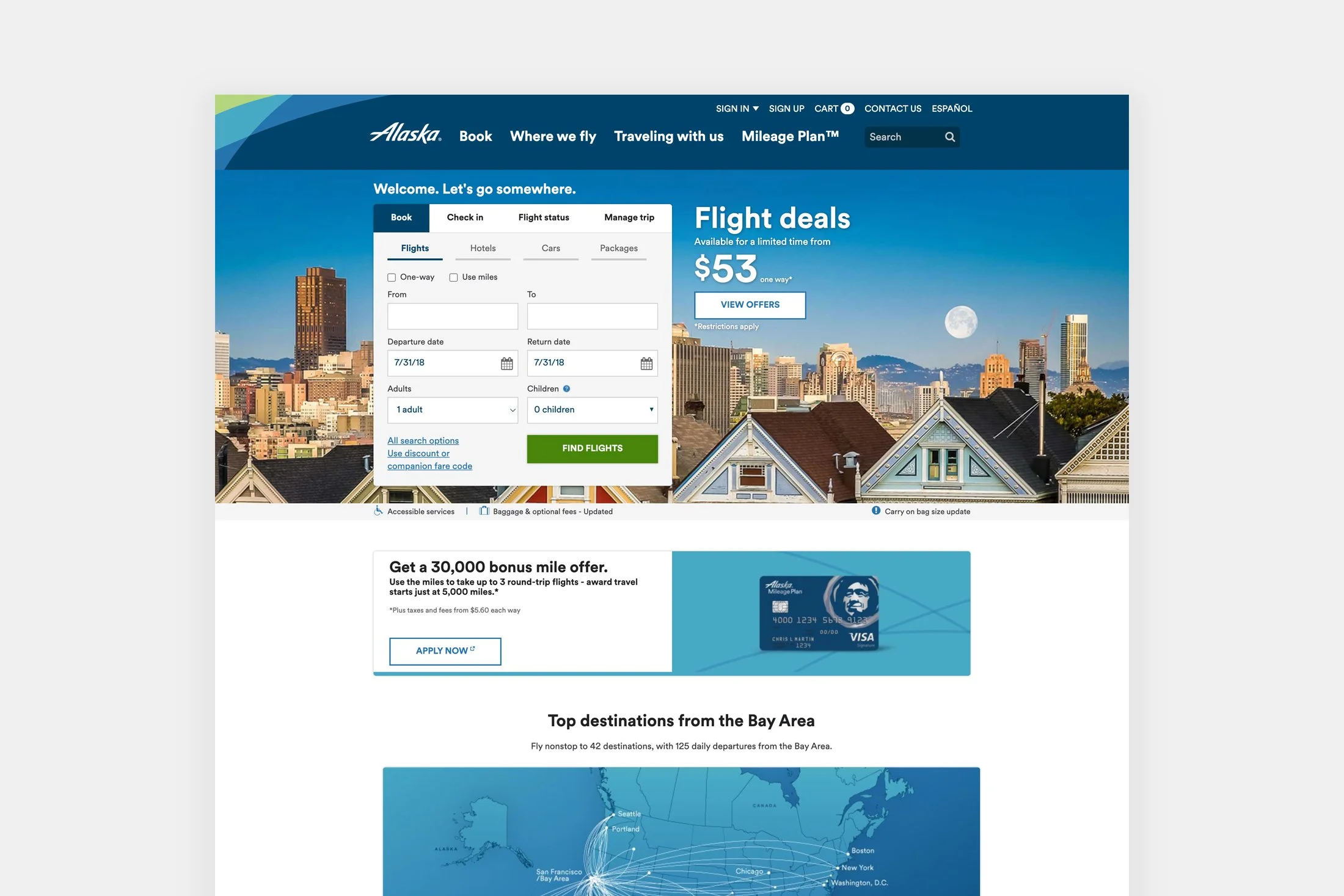
Homepage Before

Homepage After

Flight Search Before
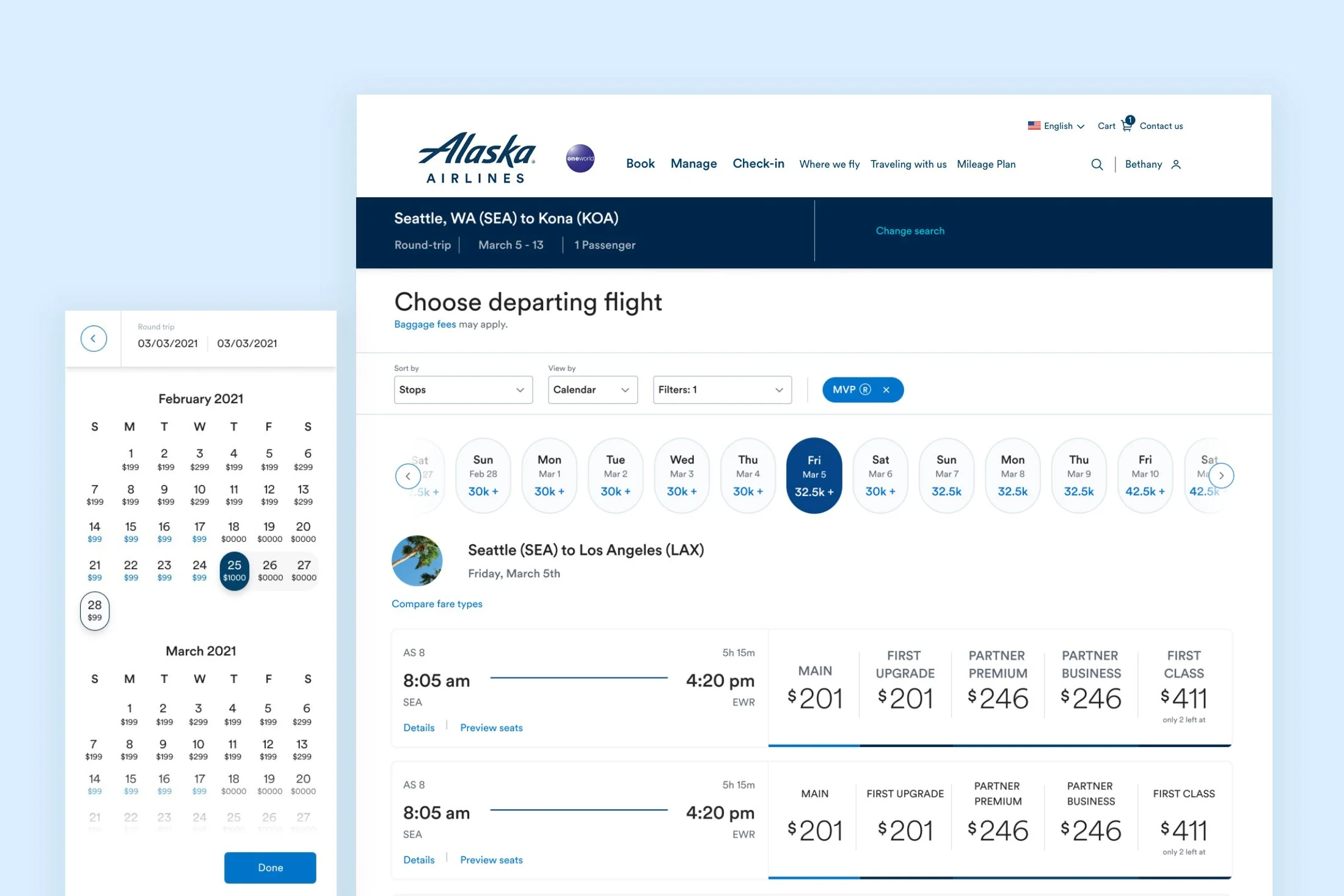
Flight Search After

Kiosk Before

Kiosk After
02 Content That Guides, Inspires, and Resonates
Overview
Content design has been a throughline of my product and design work. I leverage a deep content startegy to shape how information is structured, how products speak, and how users feel as they move through an experience. It's been a key driver in helping teams build trust, simplify complexity, and turn brand values into clear, actionable guidance.
I managed and mentored two Senior UX Writers at Alaska Airlines while leading content strategy across web, mobile, and kiosk. I authored the Alaska Airlines Brand DNA Guide, a foundational reference for voice, tone, structure, and visual expression. It aligned product, brand, and design teams and shaped everything from marketing campaigns to component-level guidance in the Auro design system.
Leading Content Strategy Through Inflection Points
I led content strategy through two major inflection points: Alaska’s integration into the oneworld alliance and the onset of the COVID-19 pandemic. I created a three-tier tone framework that mapped messaging to guest mindset and gave teams the tools to adapt voice across different moments. That framework was applied across merchandising, loyalty programs, operational updates, and time-sensitive guest communications. These shifts improved clarity, supported consistency, and helped preserve trust in moments when confidence mattered most.
Key Contributions & Impact
Managed two Senior UX Writers embedded across guest-facing product initiatives
Authored the Alaska Airlines Brand DNA Guide to align tone, structure, and visual principles across teams
Developed a scalable tone framework used across operational, emotional, and promotional scenarios
Embedded content patterns into the Auro design system to support consistent writing across platforms
Partnered with legal, brand, and product teams on messaging for global launches, loyalty milestones, and real-time service communications
JD POWER AWARD
Alaska Airlines ranked highest in overall satisfaction for both its app (688) and website (658), driven by a thoughtful content strategy that aligned precisely with guest needs and expectations.
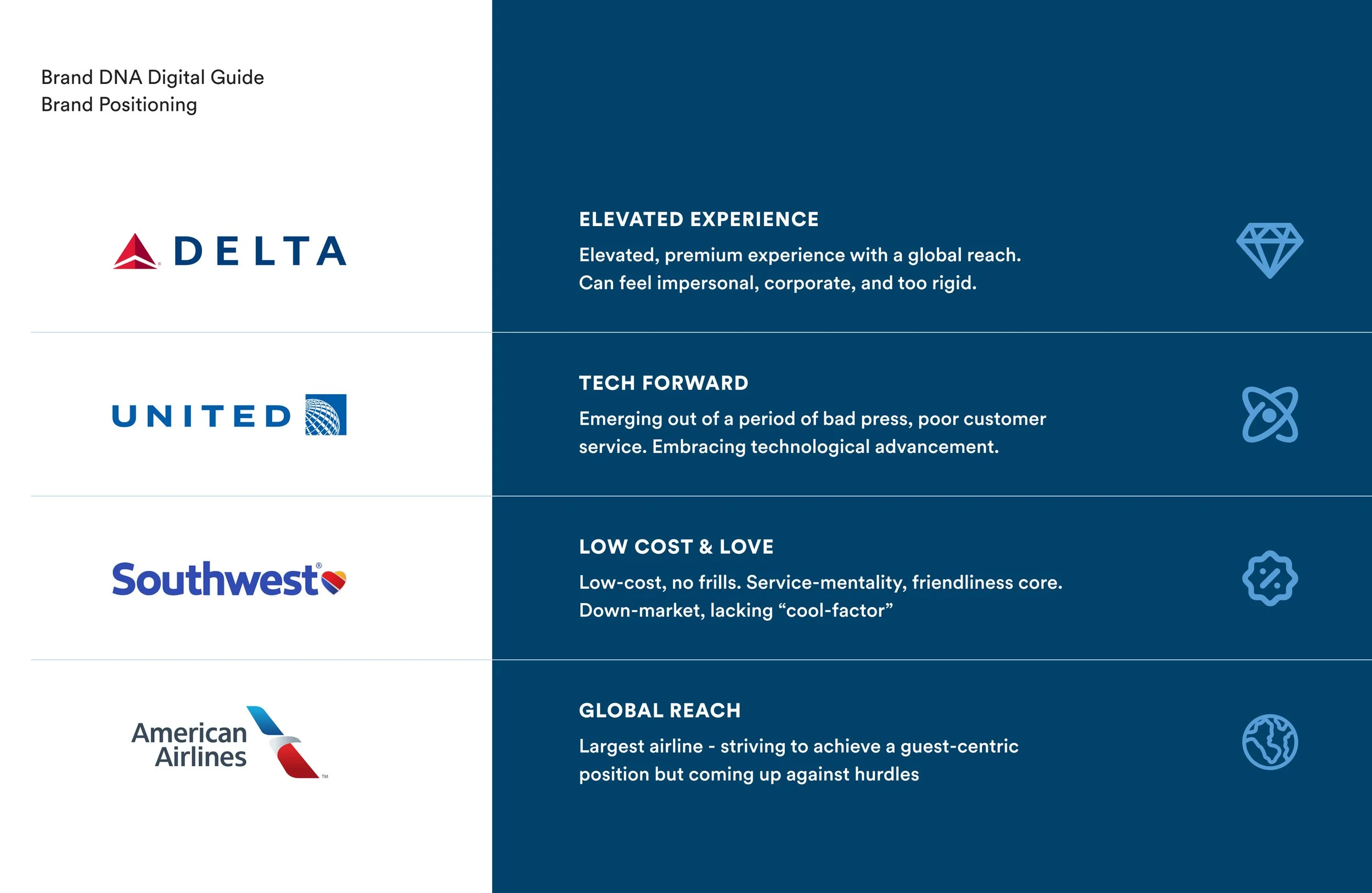

Flexible Merch Templates / Ideation
Destination Tile / Copy + Layout Tempalate
Content Guide / Information Architecture
Covid Hub / Information Architecture + UI
Confidence Module / Copy + Layout
Product Growth / Content Strategy + Visual Design
Global Brand Guidelines / Content & Strategy
City Guides / Information Architecture + UI
Sale Page Template / Content Strategy + UI
Content Architecture for the Multiverse
At Disney, I brought the same rigor and adaptability to CanonMap, a story-tracking and plot management platform used by Marvel and Lucasfilm to uphold continuity across expansive cinematic universes. Originally, key knowledge such as character arcs, canonical rules, and branching timelines was buried in scattered documents, wikis, and file repositories. Surfacing and making sense of it was time-consuming and inconsistent.
Working with product, engineering, and creative stakeholders, I helped transform this fragmented library into structured, modular content. We created standardized profiles that distilled dense lore into digestible formats, supported niche variations, and could be meaningfully linked across the system. These profiles did more than store data. They told stories with intent, hierarchy, and clarity.

In parallel, I led efforts to shape the tool’s interface copy and instructional content, aligning the tone with how writers’ rooms actually communicate. The result was a content framework that felt intuitive and familiar, helping onboard users quickly and building trust with creative teams.
Together, the voice and structure made CanonMap searchable, usable, and prepared for future AI integration. We turned complexity into clarity and gave creators a tool that supports both scale and storytelling.
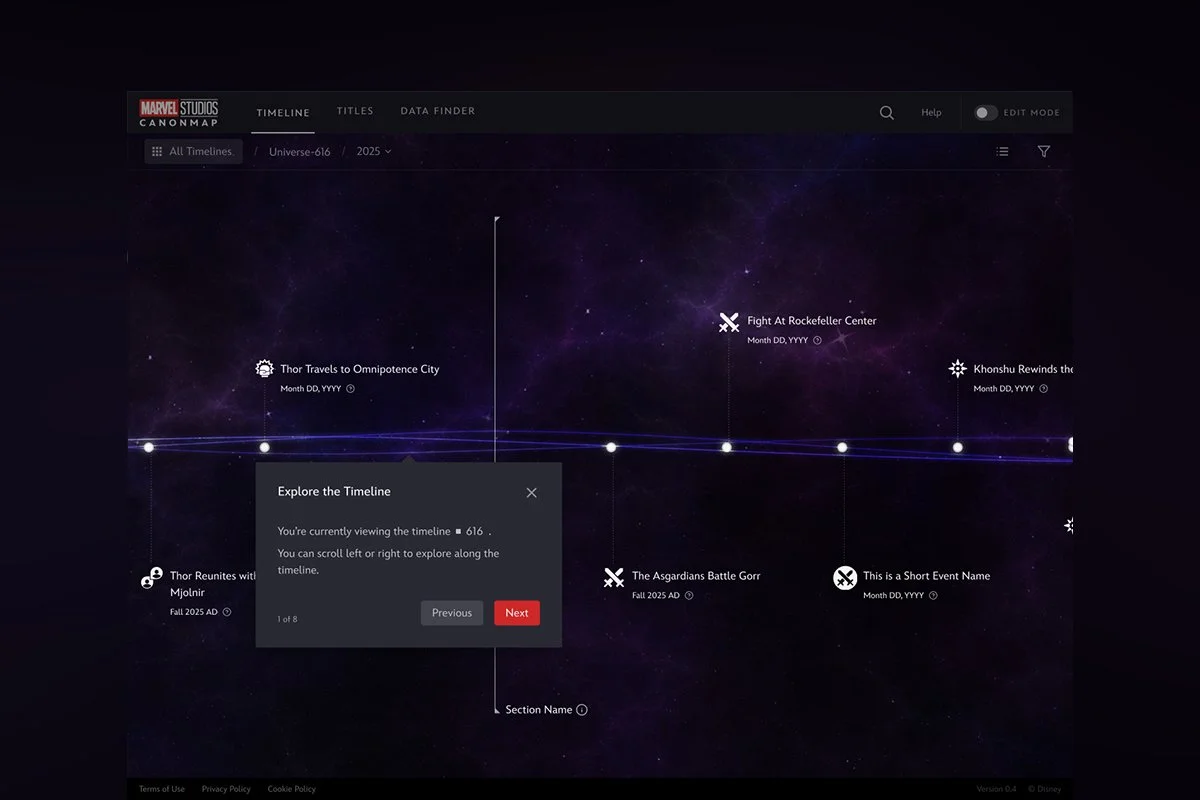
Onboarding Experience

Timeline Event Structure
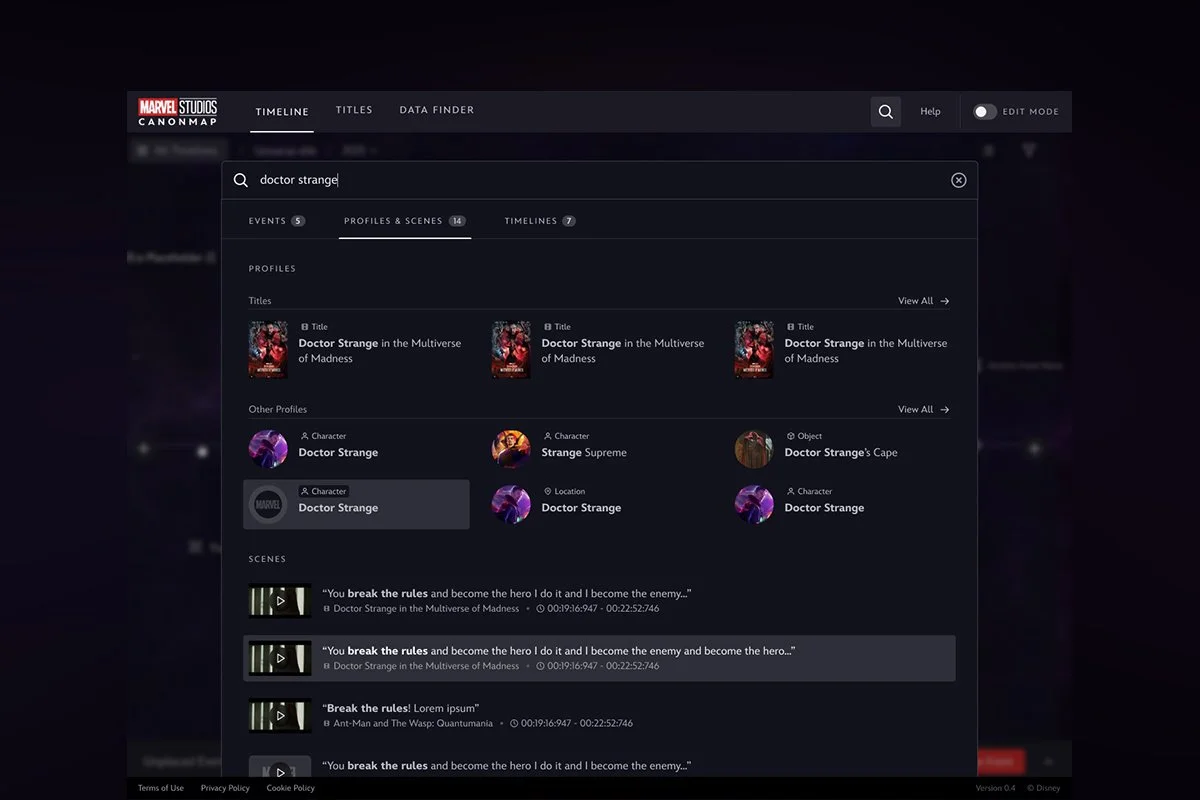
Advanced Search Categorization

Profile Page Structure

Micro-Interactions Guidelines

Character Tone Integration
03 Disney Studios Design System
The Opportunity
The Walt Disney Studios operates a complex and high-stakes production ecosystem, spanning legal, marketing, scheduling, and on-set workflows. Many of the internal tools were built in silos over time, resulting in fragmented experiences, inconsistent patterns, and friction in collaboration. With growing demand for scalable infrastructure and executive visibility, we needed a unified design system that could support both creative storytelling and enterprise-grade functionality.
My Role
As Sr. Manager of Design, I lead the development of thDesign System and UX strategy across the Walt Disney Studios ecosystem. I spearheaded the expansion of the system, overseeing its adoption across more than ten internal tools. I partnered directly with product leads, engineers, legal stakeholders, and studio executives to identify workflow gaps and ensure that design not only supported but accelerated their efforts. I also helped steer forward-looking initiatives, including integration into Vision Pro and XR formats, by ensuring the system was adaptable to new modalities without compromising consistency.
Modal Component
Table Pattern
Card Component
Key Contributions
Drove adoption of the CEL Design System across a fragmented enterprise tool landscape, unifying experiences across 10+ applications
Developed token architecture and usage patterns to streamline design and engineering collaboration
Introduced modular, flexible components to support both structured compliance flows and open-ended creative workflows
Created a governance and onboarding model to ensure ongoing scalability and system fidelity across teams
Led system expansion into XR and spatial computing formats in collaboration with innovation teams
Partnered with stakeholders across production, legal, and executive teams to align on shared UX standards and needs
Impact
Cut sprint timelines in half for large-scale feature development by replacing bespoke workflows with reusable components
Increased consistency and usability in tools used by on-set crews, legal teams, and studio leadership
Reduced rework and improved collaboration between design and engineering through standardized patterns
Strengthened confidence in the design team’s strategic value by aligning user needs with system-wide efficiencies
Positioned the CEL Design System as foundational infrastructure for future-facing initiatives including XR and AI tool integration




